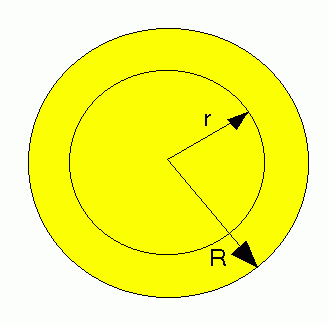|
|
|
 |
|
 |
Navigation: Contents: Info: THE
PHYSICS OF CEPHEID VARIABLE STARS PULSATION
PERIOD Astronomers can
understand the pulsation's of variable stars like Cepheids
in much the same way geologists on earth can understand our
planets interior, that is by seismology. The oscillations of
a pulsating star are due to sound waves (pressure waves) in
its interior. Now taking a few assumptions such as constant
density within the star, its pulsation period can be
determined. The adiabatic speed of
sound is given by:- Where:- Now using the pressure
gradient of a stellar body where:- The pressure at a
particular point r within a star of radius R can be shown
as:- So the pulsation
period or:- This shows that the
pulsation period is mainly determined by the stars mean
density and so is called the Period - Mean Density
Relation. For a typical Cepheid
where





![]() can
be estimated as:-
can
be estimated as:-

![]() and
and
![]() , the
period is around 10 days which falls within the limits for
Classical Cepheids.
, the
period is around 10 days which falls within the limits for
Classical Cepheids.
The
K-Mechanism
[ QUANTUMWEB SOFTWARE | QUANTUMWEB PUBLISHING ]